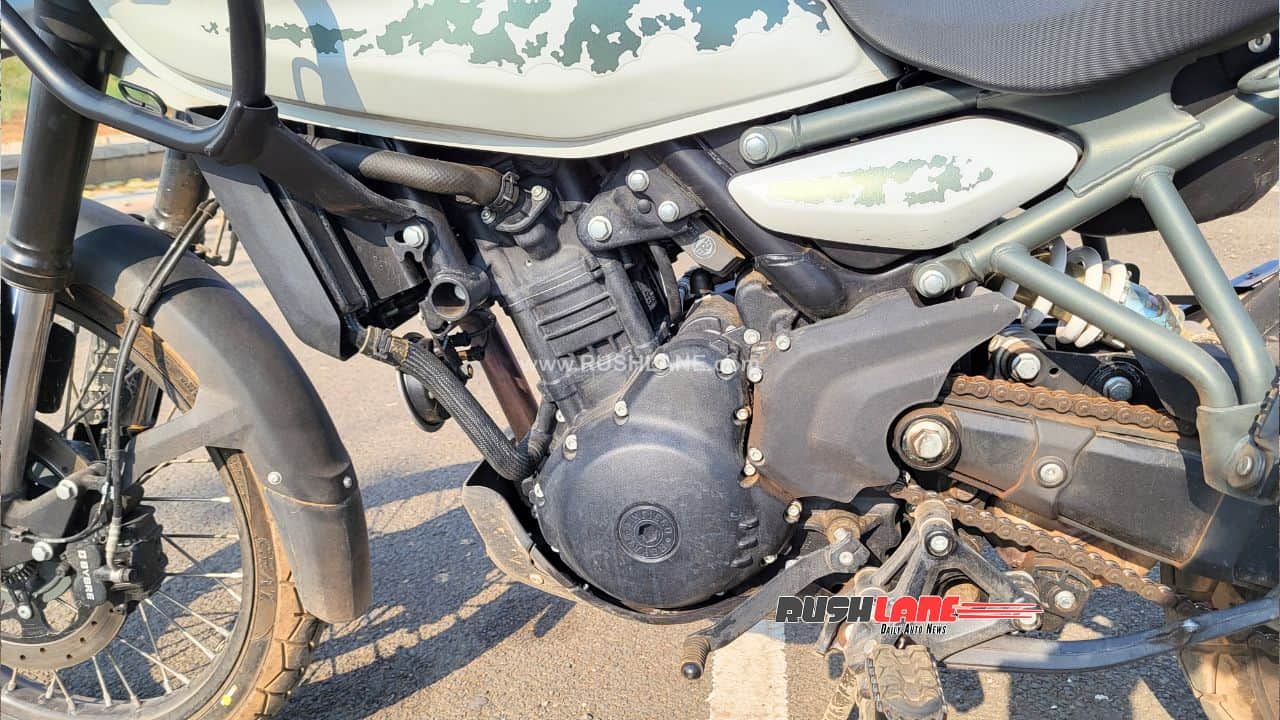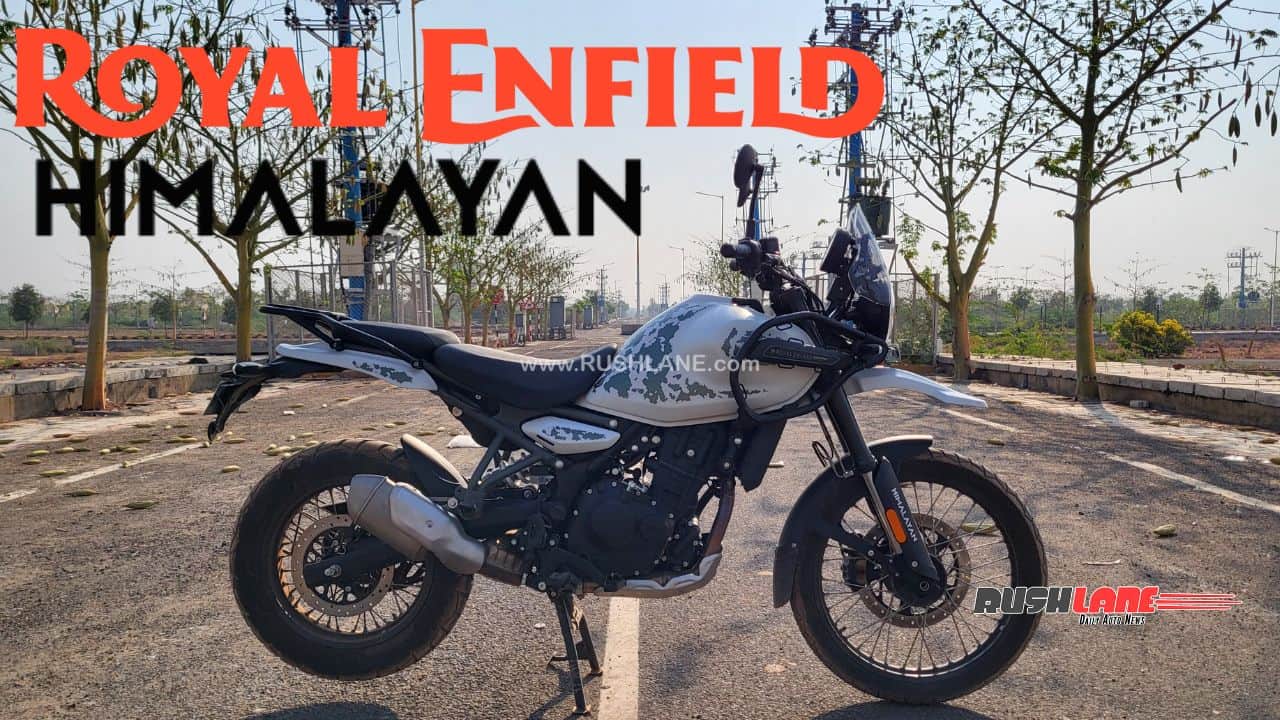
While there are a lot of praise-worthy attributes on Royal Enfield New Himalayan, almost all of them were prone to negatives, taking overall experience down
Himalayan 411 has always been the de facto motorcycle for many Indians craving a motorcycling journey filled with touring, off-roading and adventure. After a successful run, Royal Enfield retired the legendary Himalayan 411 and launched New Himalayan debuting the Sherpa 450 powertrain. After spending a long time with the review sample Royal Enfield provided, this is our long-term review of the New Himalayan.
Royal Enfield New Himalayan Long Term Review
You must be wondering how we found more negatives than positives with the New Himalayan. It is sort of like James May starring in a Bengali TV serial. Hard to believe, but true nonetheless. So, is the motorcycle bad? Is it a lemon? Not at all. Almost everything on the Royal Enfield New Himalayan is praise-worthy. However, almost all of those praises come with caveats, taking the overall experience down.
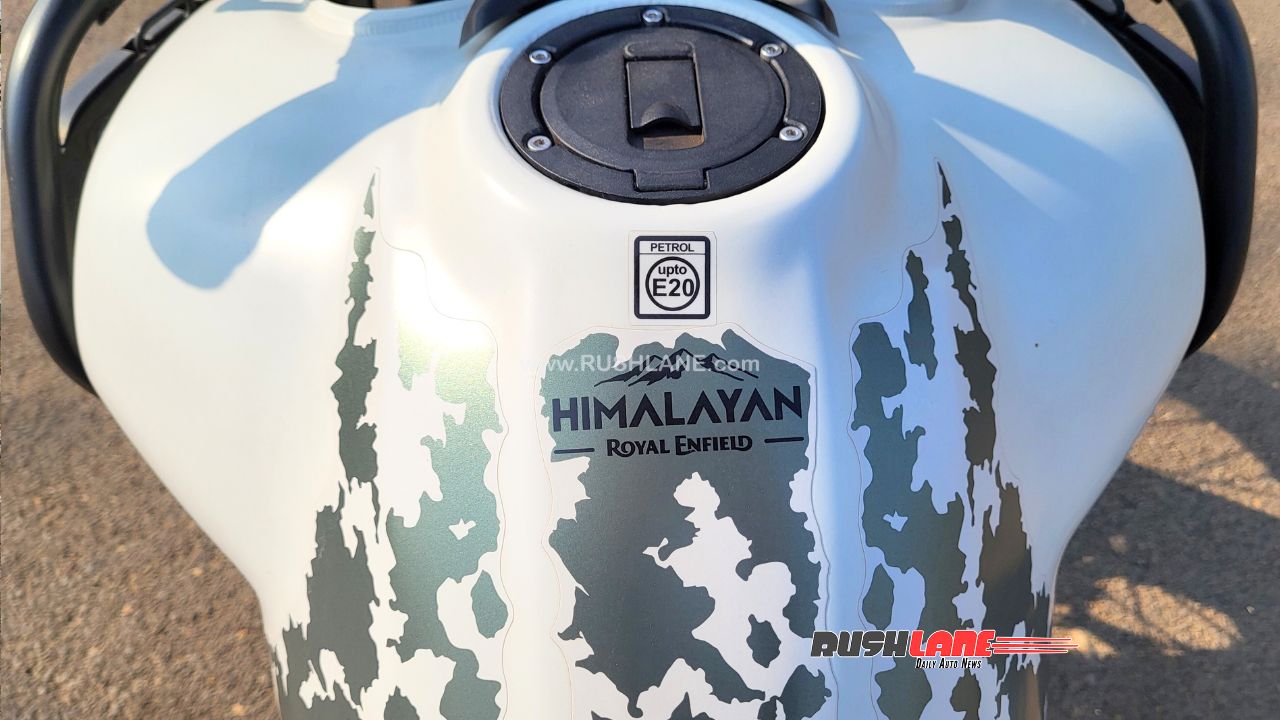
Will the motorcycle stay this way forever? We hope not. We think Royal Enfield will iron out most of these negatives in the future, considering how Himalayan 411 was launched and how it evolved towards the end of its life cycle. But as it currently is, New Himalayan 450 aims to be the jack of all trades. Is it a master in any? Let’s take a look.
Design & Aesthetics
New Himalayan sticks to its design roots and maintains an overall similar silhouette as Himalayan 411. That said, New Himalayan has bulked up quite a bit and looks and feels like a big bike. When you’re on the saddle, this visual bulk lends a feeling of riding a much bigger motorcycle than it is. Fatter tyres at the rear, a large fuel tank along with USD telescopic front forks at the front lend a substantial feel. We love the way Royal Enfield integrated brake lights within rear turn indicators. Cool stuff.
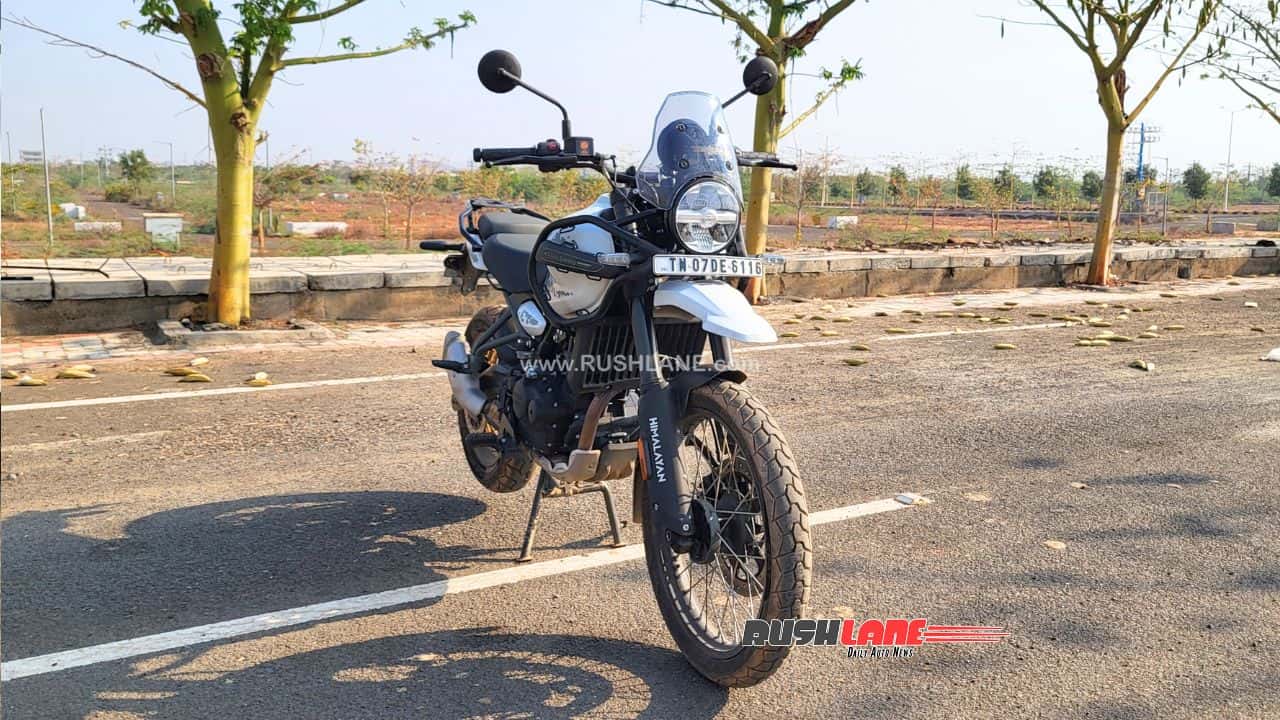
That said, I didn’t like the beak and the pattern on Kamet White colour, which is subjective, though. Objectively, Tripper Dash console clamp could have been tidied up. Especially with a transparent windshield, this unappealing setup is on full display. Rear luggage rack is sharp around the edges. Our driver nicked his hand when cleaning around this area. Other than that, we didn’t see any other sore points like exposed wiring, ugly welds and other attributes that might be termed deal breakers.
Ergonomics & Comfort
Royal Enfield New Himalayan gets two-step adjustable seat height – 825mm and 845mm. I’m a 182 cm long individual and I found the taller seat height more appealing. I could even flat foot easily with the taller setting. Riding ergonomics of Himalayan are spot on and Royal Enfield has nailed the rider’s triangle. At least for my body composition. Riding posture is upright and lends great comfort in the long hauls. Standing and riding while off-roading feels like second nature. Heel plates are perfectly positioned too, offering good leverage to control the motorcycle.
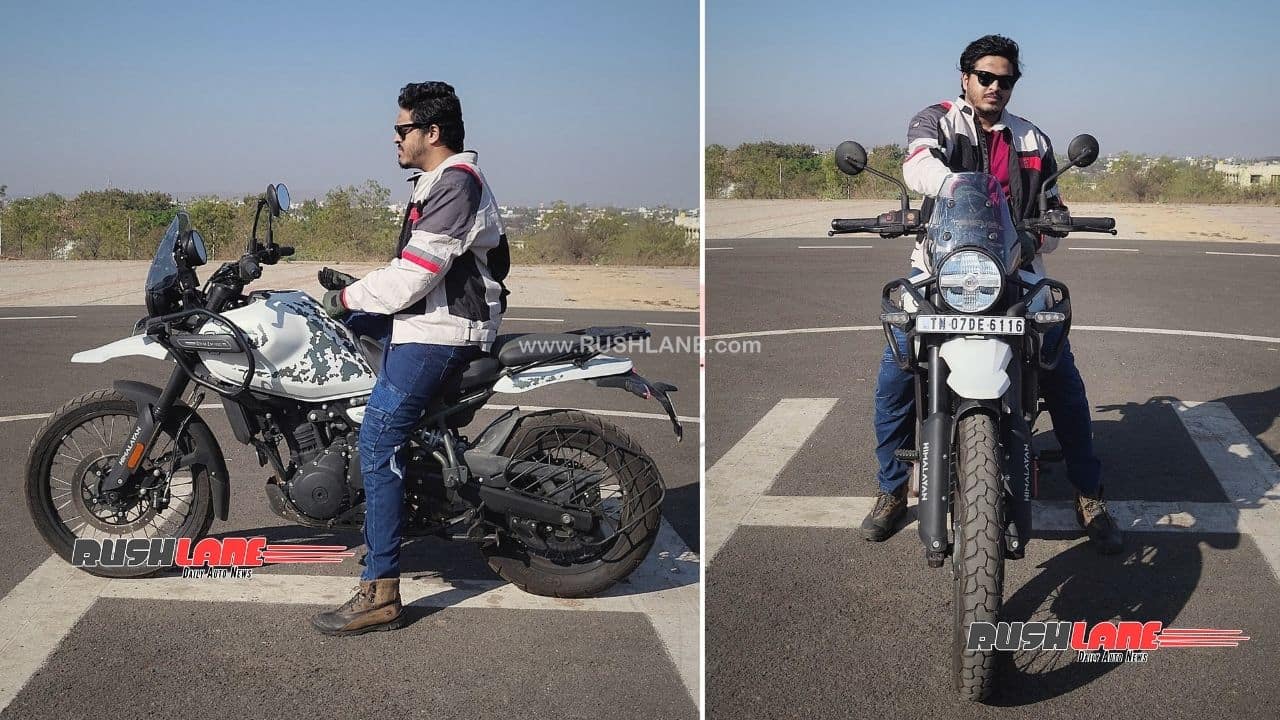
I had initially planned a 3,000 km long travelogue with New Himalayan. But that plan faded with every kilometre I clocked on this motorcycle due to the hard seat. While my shoulders, back, knees, ankles, neck and other parts were fatigue-free on longer hauls, my bottom wasn’t. And I constantly had to take a break every 100 km or so and switch positions every 50 km. 3,000 km of this pain? No sir. Maybe If Royal Enfield had given me the bike with Touring Seat accessory on, that would’ve been a different story.
Powertrain & Performance
This is by far the juiciest part of the New Himalayan debuting Sherpa 450 engine. This is the first-ever Royal Enfield motorcycle to feature liquid cooling and a DOHC 4V head. Also, the first-ever single-cylinder Royal Enfield to feature a 6-speed gearbox, a slipper clutch and a ride-by-wire throttle. Performance metrics from this 452cc engine are 40 bhp peak power at 8,000 RPM and 40 Nm of peak torque at 5,500 RPM.
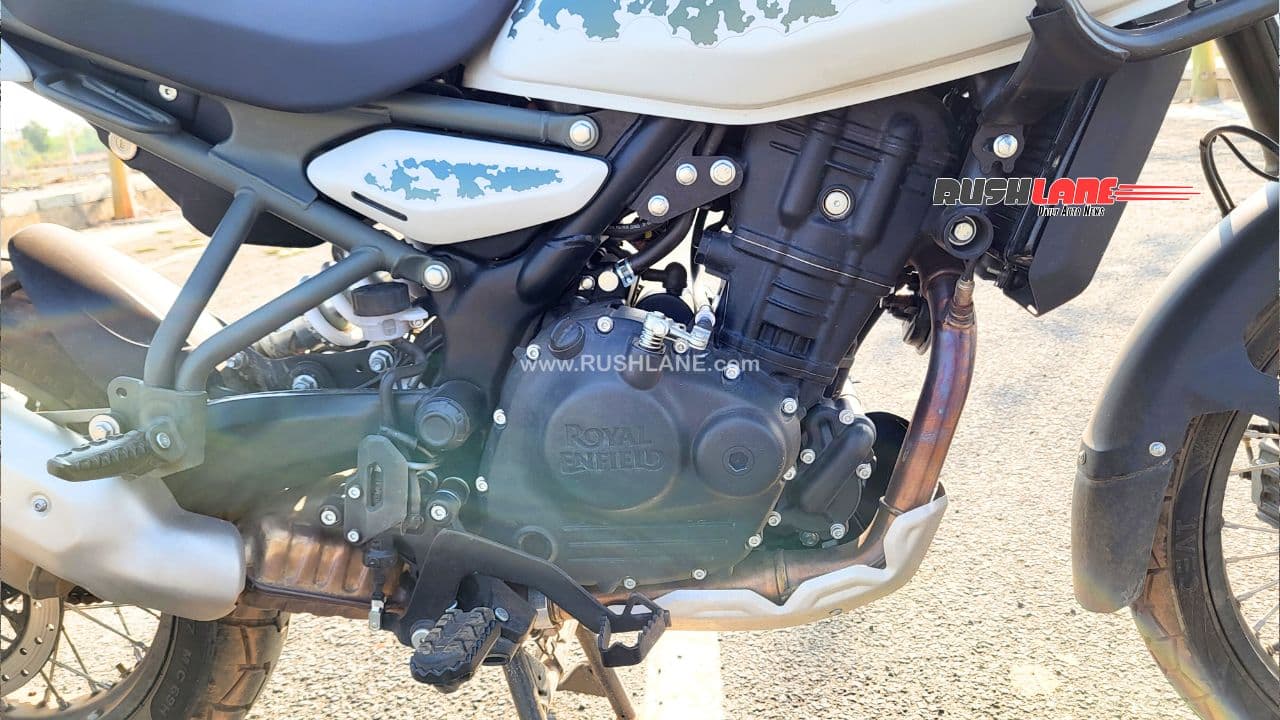
100 km/h comes up in under 7 seconds and this is easily one of the most fun to ride Royal Enfield ever. Acceleration is addictive and is almost KTM-like in the way it builds pace. I liked the vigour and gust with which this machine accelerates. This new Sherpa 450 is not a thumper and sounds like any other liquid-cooled motorcycle would. Which is just fine, if you ask me.
What isn’t fine, are those weird vibrations starting around 95 km/h and making their presence known till 120 km/h. Post which, engine smoothens again. These vibrations numbed my wrists and could be felt around fuel tank and footpegs. This is quite a bummer because 100 km/h to 120 km/h is kinda the sweet spot for this machine and that’s exactly where these vibrations are.
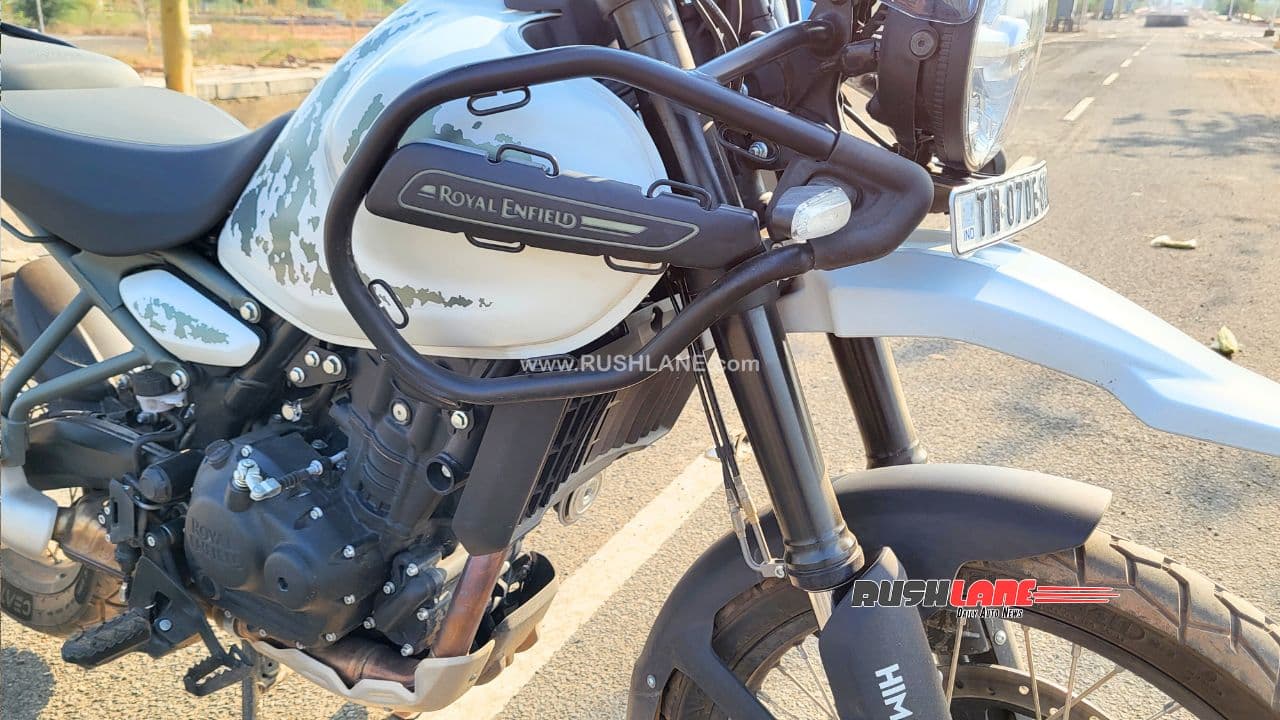
Also, the Royal Enfield personnel who briefed me about this motorcycle, said that the engine has high tappet noises and is quite normal for Sherpa 450’s high-compression nature. In my experience, I didn’t face any abnormal tappet noises at all. However, there were harsh and loud crackling noises from the engine at higher RPMs with our unit. I don’t wanna say knocking noises, but that’s how they sounded.
Fuel Economy & Running Costs
In the first impressions review, I mentioned a 34 km/l fuel efficiency which turned out to be inaccurate as the bike’s fuel gauge is hilarious. More on it later. I did a proper tank-to-tank range test and the actual fuel efficiency turned out to be between 26 km/l to 28 km/l. For a 196 kg motorcycle hitting 100 km/h in under 7 seconds, that might look impressive. However, these figures I mentioned are best-case scenarios and if you wring the throttle more often, this engine gulps down fuel at a faster rate.
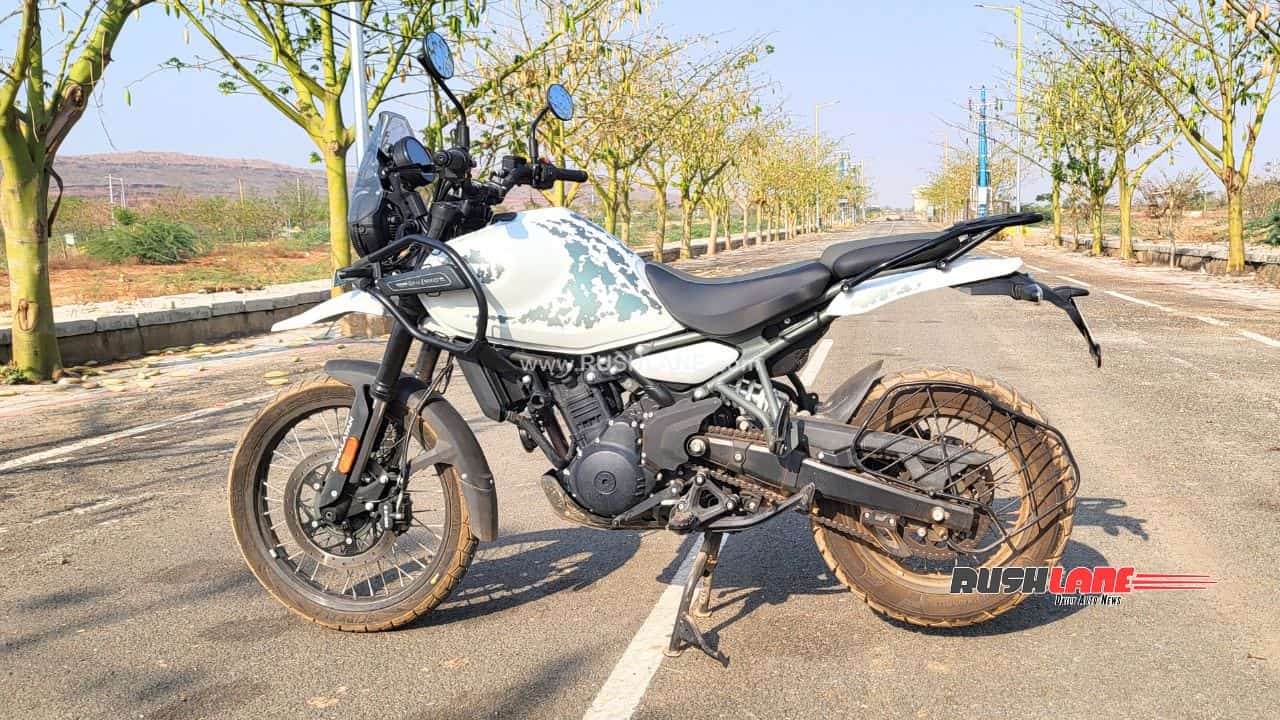
If I take my commute needs and try to fit the New Himalayan in it, I was not impressed with bike’s high running costs. The 90 km commute between my home and my farmhouse on the New Himalayan commanded Rs. 650 to Rs 700 worth of fuel for a round trip. If I shell Rs. 100 to Rs. 150 more, I can just take my car. My car might be around 5 seconds slower to 100 km/h than New Himalayan, but it has a 4-cylinder engine displacing 1.5L and lugging a 4.4m long SUV weighing 1.4 tonnes along with 5 occupants and their luggage.
Ride, Handling & Dynamics
If there is one area where New Himalayan didn’t show me any negatives, it is the bike’s ride and handling dynamics. The unit I was given had its triple tree misaligned, despite never falling once. In this sense, handlebar is always tilted towards exhaust side, while going straight. Also, there were strong rattles from the triple clamp area on my unit too.
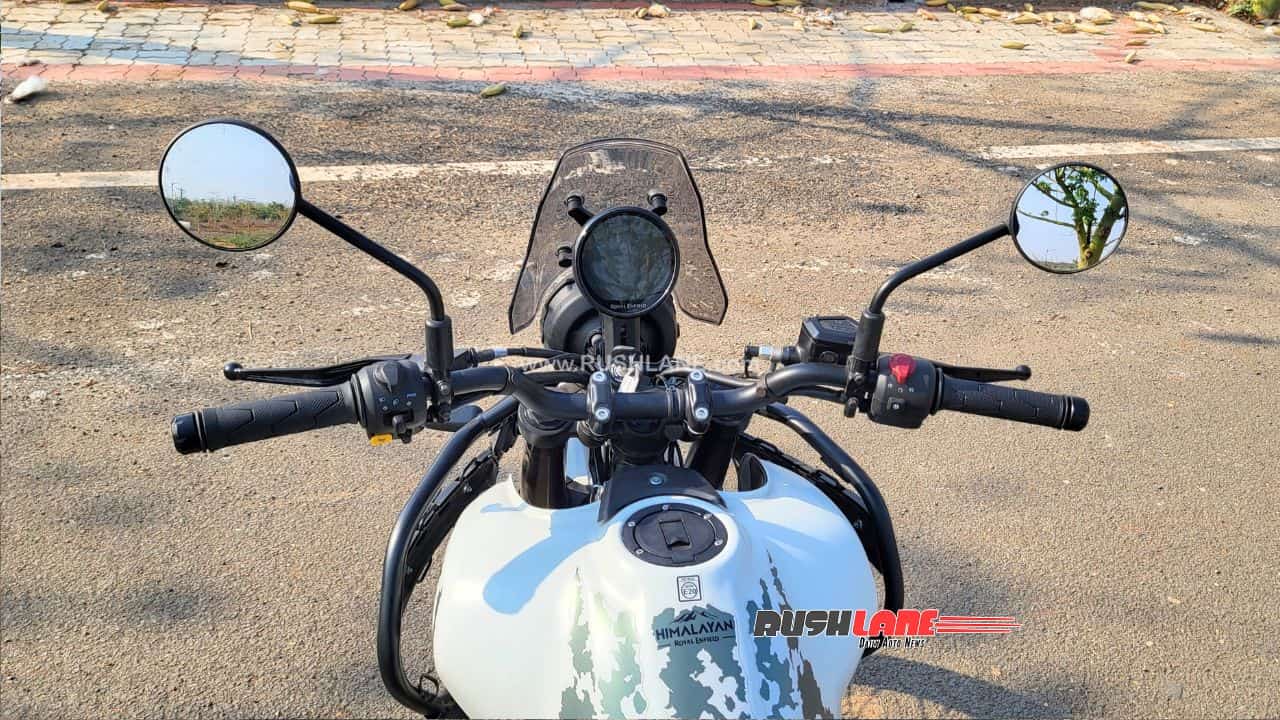
Despite that, the way New Himalayan handles Indian roads is its strongest flex point. Suspension setup is significantly overhauled when we bring Himalayan 411 into the equation. We have USD telescopic front forks, first ever on any single-cylinder Royal Enfield. They do a fantastic job of absorbing bumps and ondulations. I often found myself carrying more speed onto bad patches of road and trusting the suspension and large 21-inch front and 18-inch rear wheels to do their thing. Which they did beautifully. When riding with a pillion, potholes or cavities made their presence known, but nothing sinister.
Chassis is beautifully engineered on the New Himalayan. There is good cornering clearance, although, New Himalayan is not a corner carver. Lending more grip and confidence is the 140-section rear tyre as opposed to 120-section on its predecessor. Steering is not very quick, especially with the large 21-inch front wheel. But it is par for the course and lends a sense of stability and security.
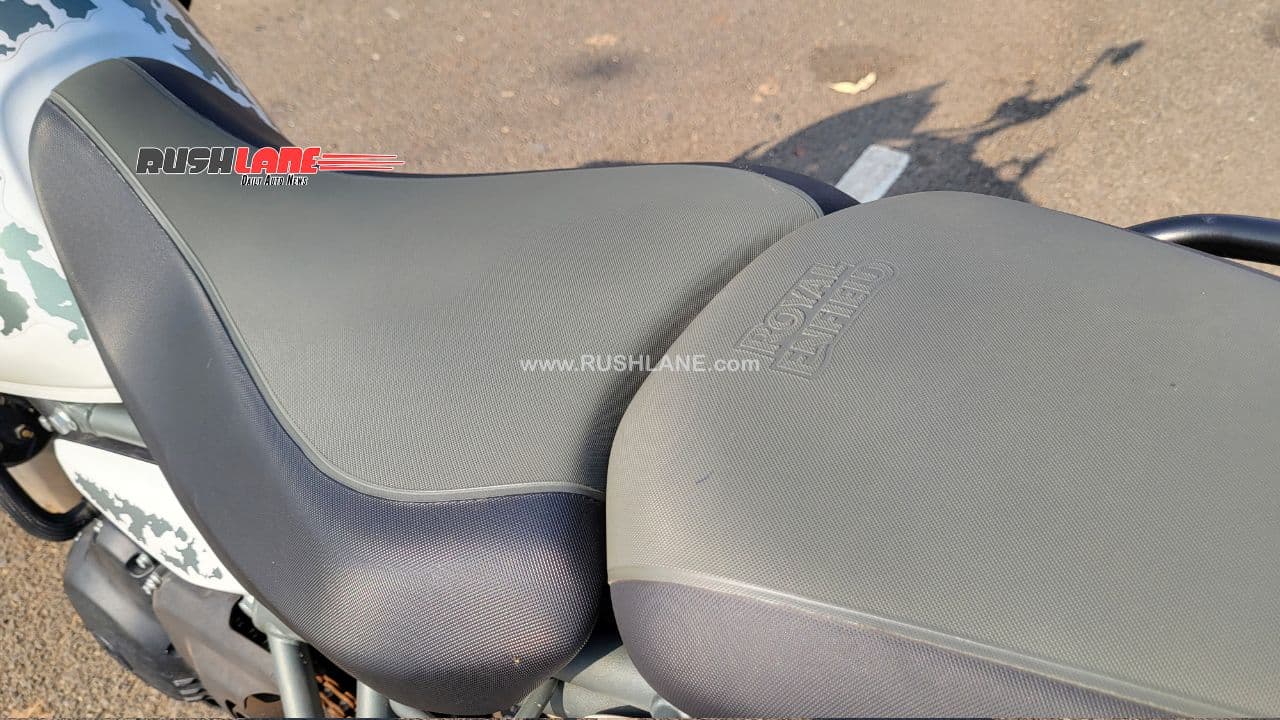
Riding Experience
1. City – Royal Enfield has lowered the kerb weight on New Himalayan when compared to Himalayan 411 by 3 kg. At 196 kg, New Himalayan is still not a light motorcycle in any sense of the world. Further dragging the city riding experience is a rather heavy clutch. Especially in large cities like Bengaluru, Pune, Mumbai and Delhi NCR, with slow-moving traffic, one would crave more lightness in both these regards. But weight and heavy clutch were present in Himalayan 411 too.
What hindered city riding experience the most, was this Sherpa 450 engine on New Himalayan. This engine has little to no bottom-end tractibility, which is completely opposite to the torquey character on Himalayan 411. I have stalled this bike in 3rd gear, 2nd gear and even in 1st gear. One will get used to it eventually, but not having low-end performance is not a good thing. What is a good thing, though, is the liquid-cooling setup on this engine. Even in peak Bengaluru traffic, it got warm. Never uncomfortably hot, though.
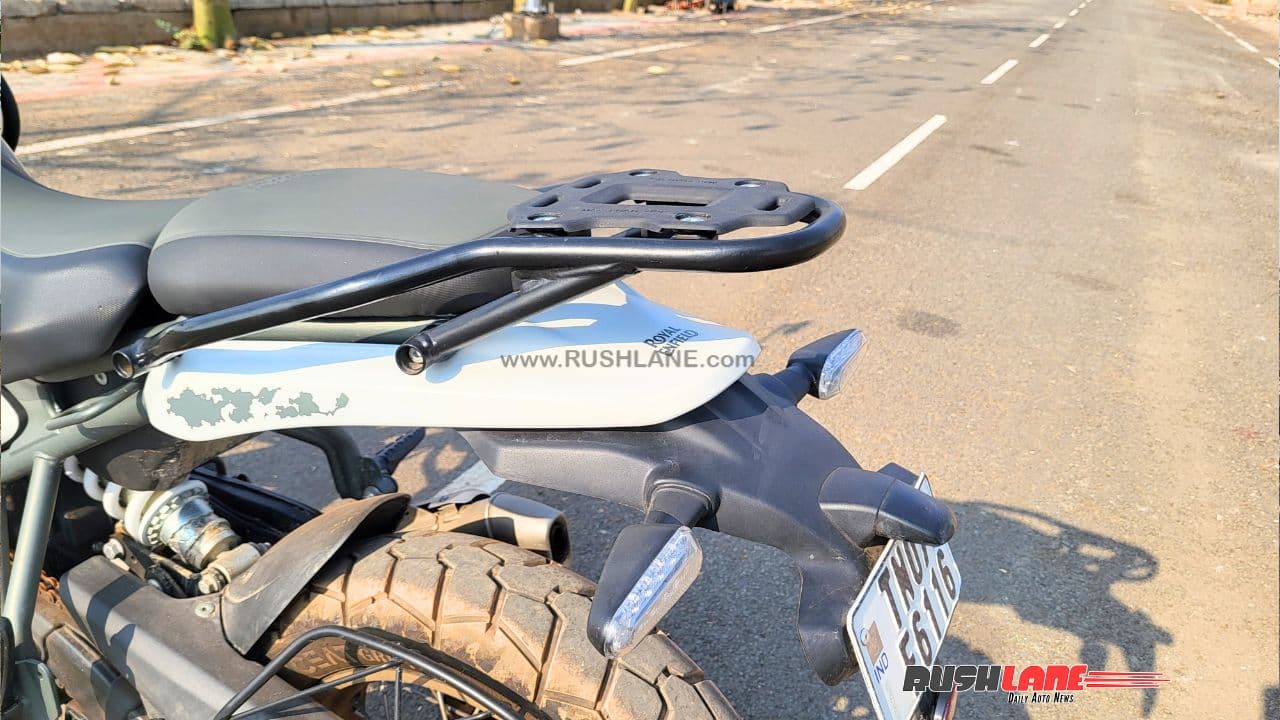
2. Off-Roading – The same negatives that bothered me in the city, also bothered me while off-roading. These are heavy clutch, lack of low-end performance and bike’s rather heavy kerb weight. There was another negative that bothered me more, punctures. In North Karnataka, there’s Jaali plant in excess and occupies around 75% of non-forest and non-agricultural land. This plant has lethal thorns, especially when dry. Local people use Jaali plant as firewood and spread these lethal thorns while cutting and transporting this plant.
Still, I did three different hill climbs on this motorcycle and I even blasted it across beaten paths on my red-soil and black-soil farms. Just like in the city, negatives kinda fade away when you increase the pace. On more technical off-road bits, New Himalayan gets slightly cumbersome. I turned on rear ABS when on my red soil farms as the terrain was filled with loose stones. I wanted to try water wading in a stream but was sceptical owing to the stubby exhaust positioned lower than in Himalayan 411.
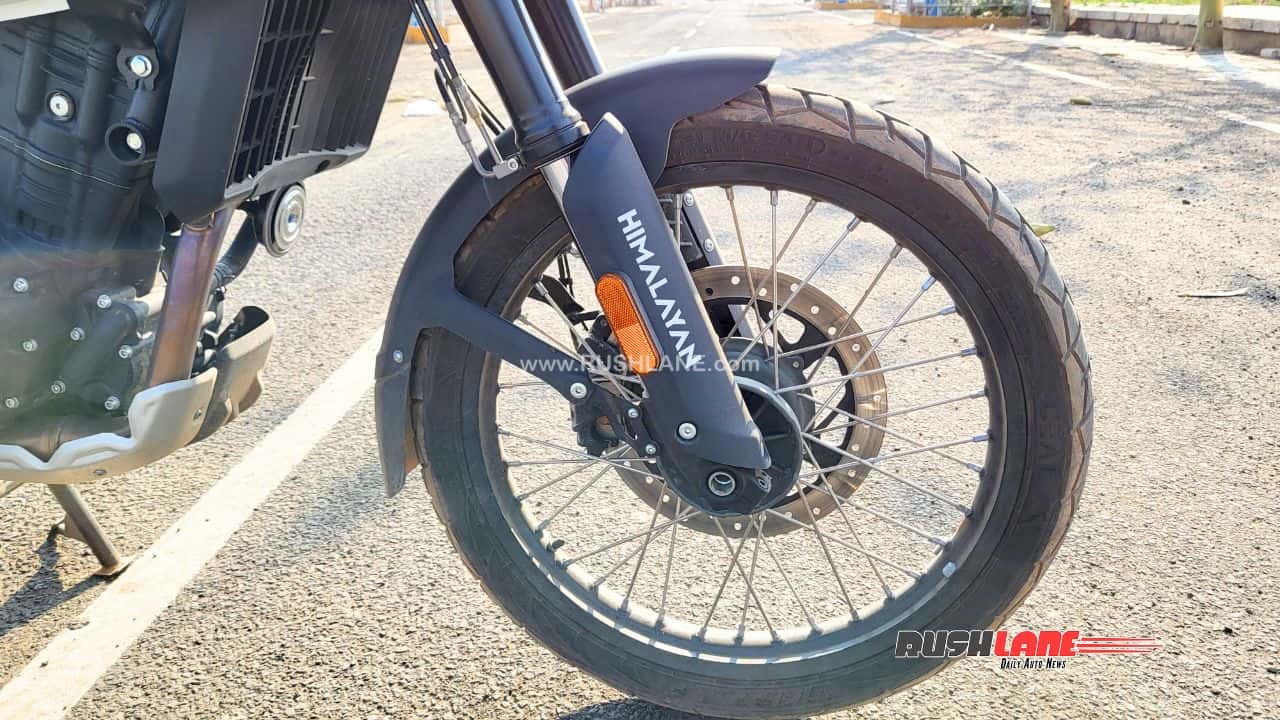
3. Touring – This is New Himalayan’s biggest strength. The motorcycle yearns to be unleashed on the highways. There are ample provisions for you to mount your saddlebags, panniers, top box and even a tank bag. High-speed touring is very comfortable on this motorcycle, only if you opt for the optional touring seat accessory, that is. Engine heating is well controlled at higher speeds and straight-line stability is commendable. However, the big negative here is the vibrations that creep in between 95 km/h to 120 km/h.
Switchgear
Royal Enfield New Himalayan shares quite a bit of switchgear components from other RE bikes. The right side switchgear is fine and works as intended with a Mode button and hazard light button. I’m not a fan of left switchgear where Royal Enfield has integrated pass light into the main headlight dial. Where passer switch was located on older RE bikes, we have a Home button for Tripper Dash.
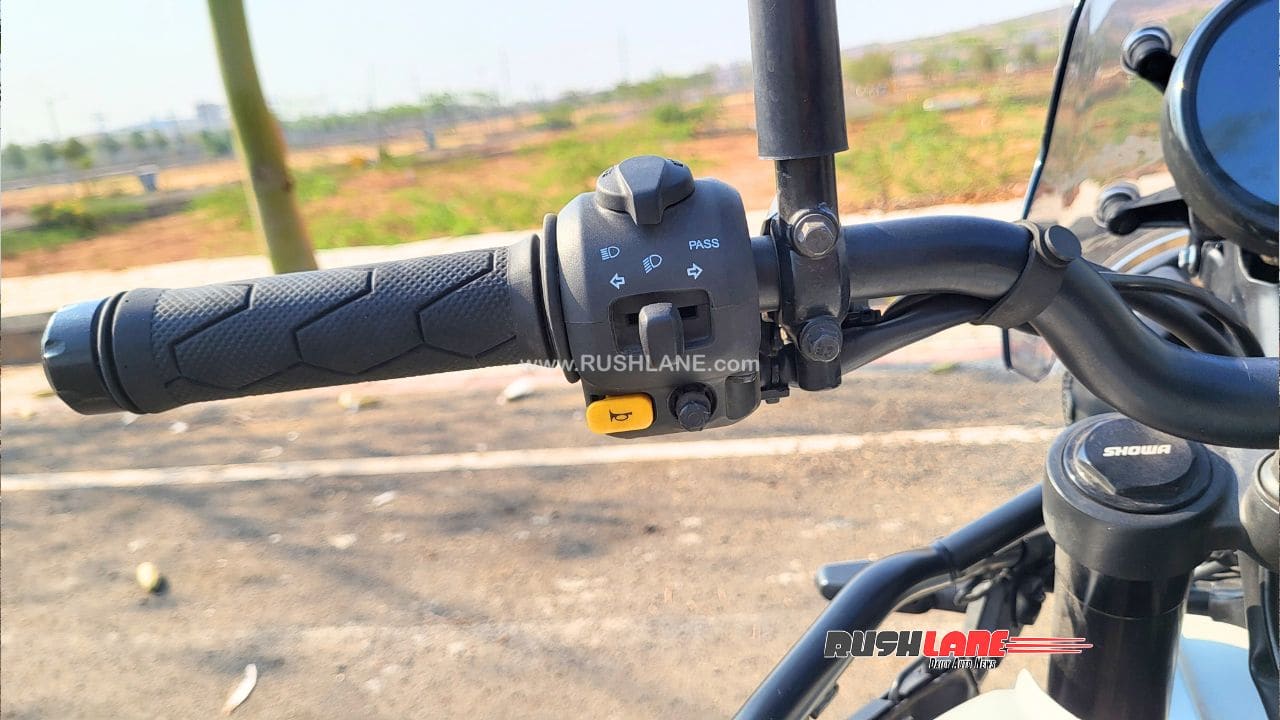
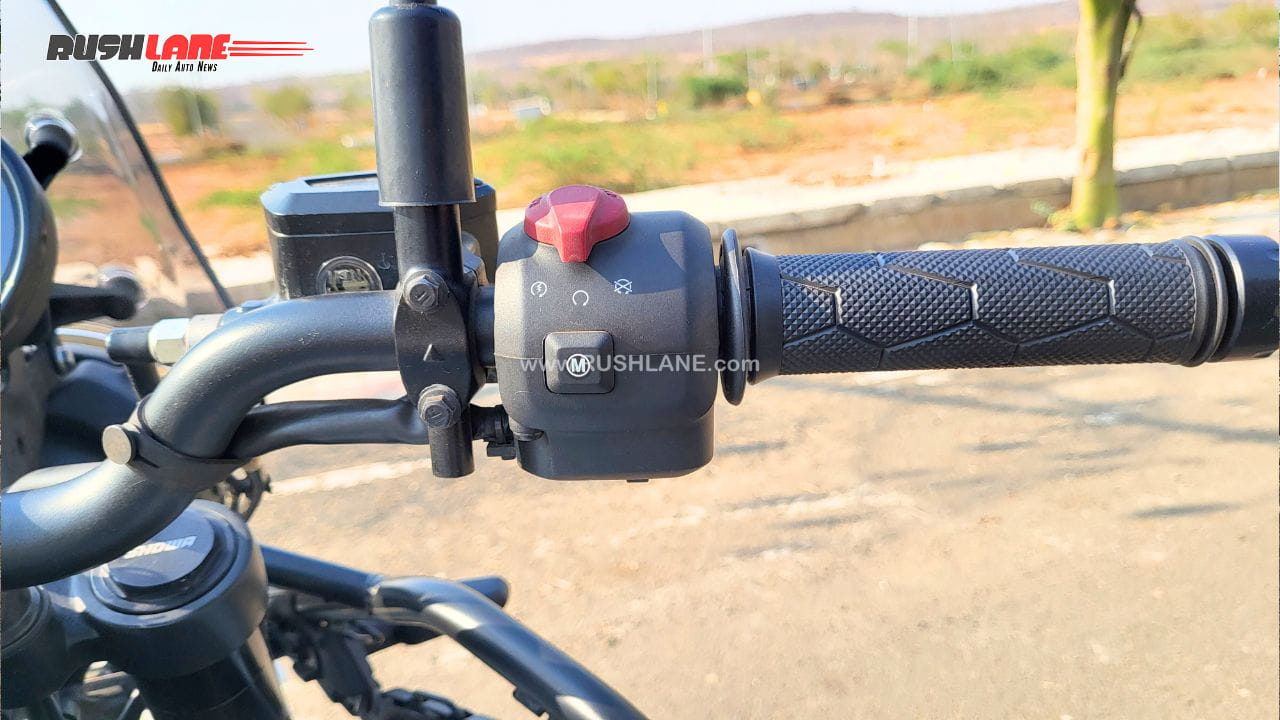
To use a passer/flasher on New Himalayan, your left thumb has to be an Olympic gold medal-winning gymnast and is very hard to reach when you’re wearing full leather gloves like I do. Passer/flasher had a 7/10 successful hit rate too. Which is not as bad as the joystick used to navigate Tripper Dash. This joystick is very flimsy and doesn’t feel like a quality item. When you want to go up, down, left or right, there’s no issue with 9/10 click rates. But pressing this joystick to select, had around 2/10 click rates and it almost always registered right function over select (press).
It was quite a shocker to me when I figured that New Himalayan doesn’t have self-cancelling turn indicators on an almost Rs. 4 lakh (OTR, Karnataka) motorcycle. Also, there is no beeping sound to the indicators and I often forgot to turn them off. On a touring machine, that’s not a good idea. Round ORVMs look nice. But they’re not very practical. Around 50% of the real-estate was occupied by my riding jacket and these ORVMs are prone to vibrations. When cruising at around 100 km/h where the vibrations creep in, left ORVM tends to fall and right ORVM tends to face the rider. Also, I have caught ORVMs yanking loose on bad patches of road or speed humps on video.
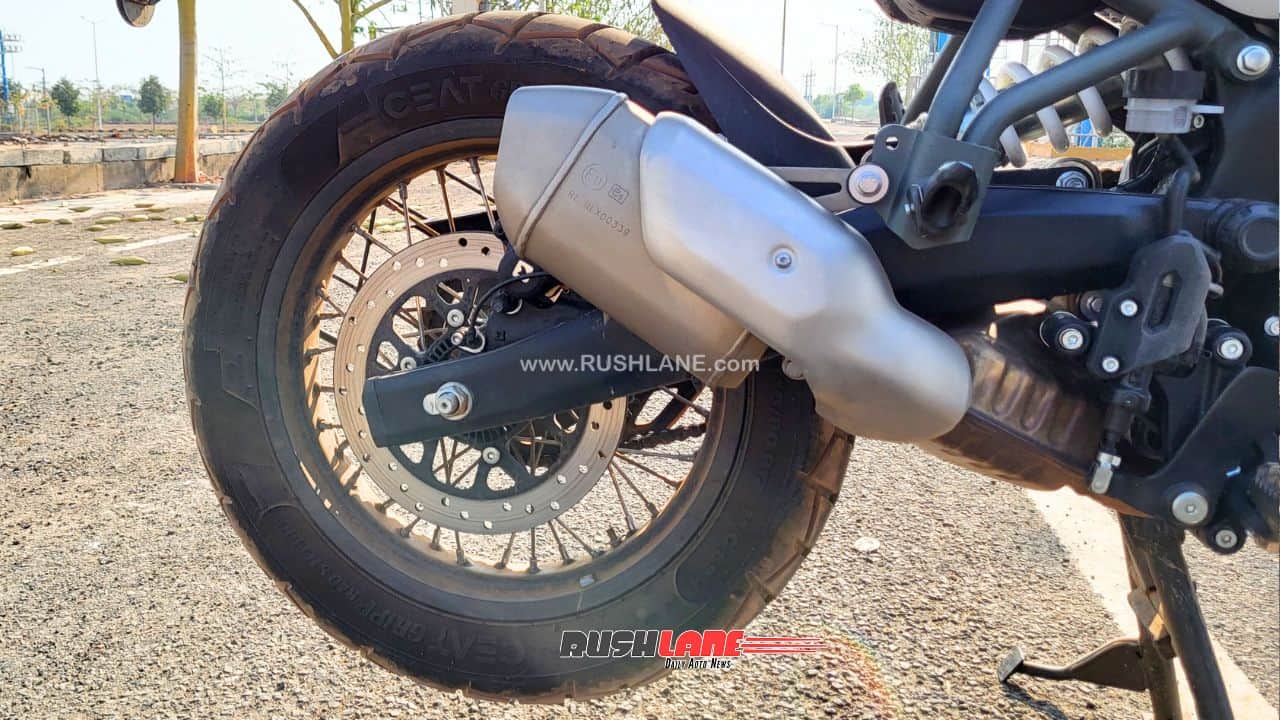
Tripper Dash
With New Himalayan, Royal Enfield is offering the Tripper Dash, a bright circular colour TFT display that supports smartphone connectivity, Google Maps integration and music controls. When I first received the motorcycle, Bluetooth connection was established, but navigation and music control never worked with both IOS and Android. There was a FOTA update rolled out for New Himalayan Tripper Dash on 21st February 2024 consisting of five software packets.
Post this update, both navigation and music controls worked, albeit only occasionally. I often know where I am going. So, I didn’t use the navigation feature as much. There are two negatives why I would be hesitant to rely on this navigation feature. Firstly, navigation feature drains my phone’s battery as it needs Wifi, Bluetooth, mobile data, location and my screen to be turned on at all times. Yeah! If you’re thinking that using the Type-C charger to charge my phone on a holder would solve this issue. But now my phone is exposed to direct sun (40+° C in North Karnataka) and it heats up, force shutting Royal Enfield app and navigation will turn off regardless.
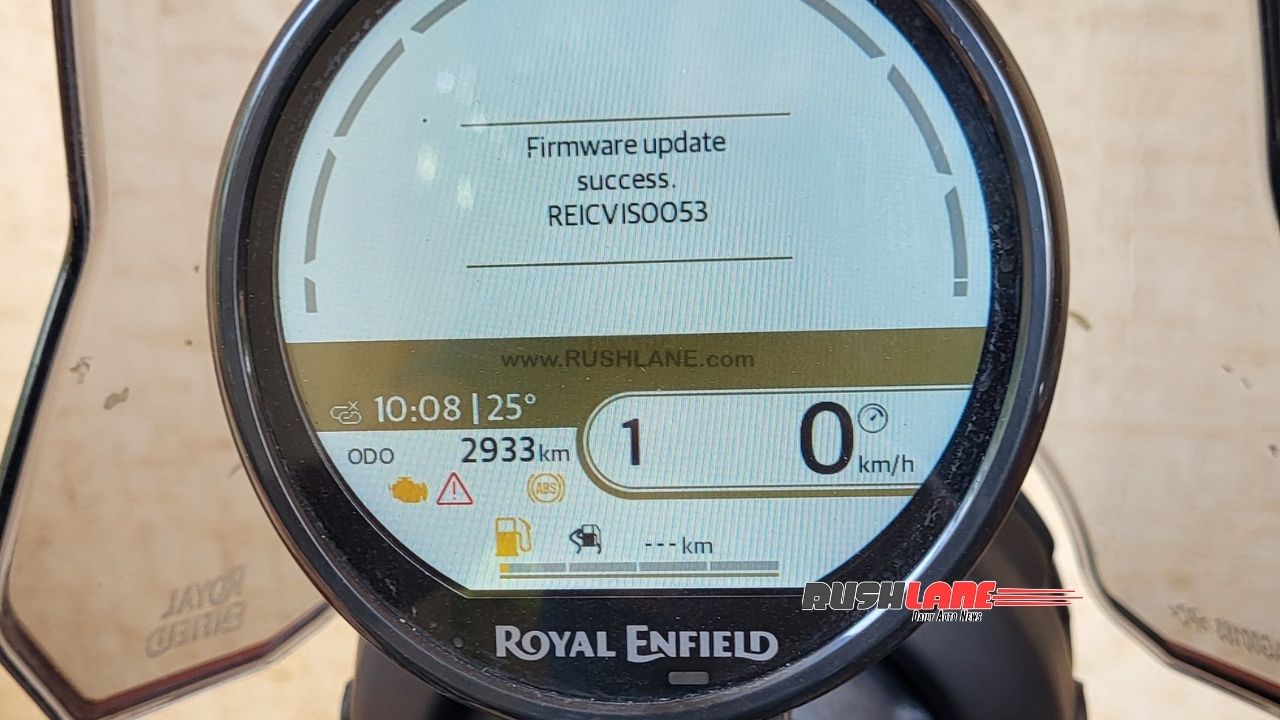
Secondly, navigation feature doesn’t work all the time and randomly freezes when on the move. I used navigation feature once and it froze on the move and I caught it on video. If there were any turns and I had completely relied on the Tripper Dash’s navigation, I would have missed them all. Other than navigation, there are other features like dark/light mode based on ambient light, gear position indicator, detailed trip reports and other features that work flawlessly. What doesn’t work flawlessly, are the real-time fuel efficiency and DTE (Distance To Empty).
Speaking of DTE, it is a good time to report about the hilarious fuel gauge. Initially, I thought Royal Enfield New Himalayan only showed more fuel than I was introducing it with. There is another behaviour where it doesn’t show any fuel on the meter, despite there being ample fuel inside. You never know if the gauge is showing more fuel than reality or less. Once, the meter was fully down and DTE was 0, the bike still covered 100 km with fuel to spare. You must have heard of range anxiety on an EV, I had range anxiety on this bike and carried a bottle of fuel in my bag, which is ridiculous in 2024 on a motorcycle that costs almost Rs. 4 lakh (OTR Karnataka).
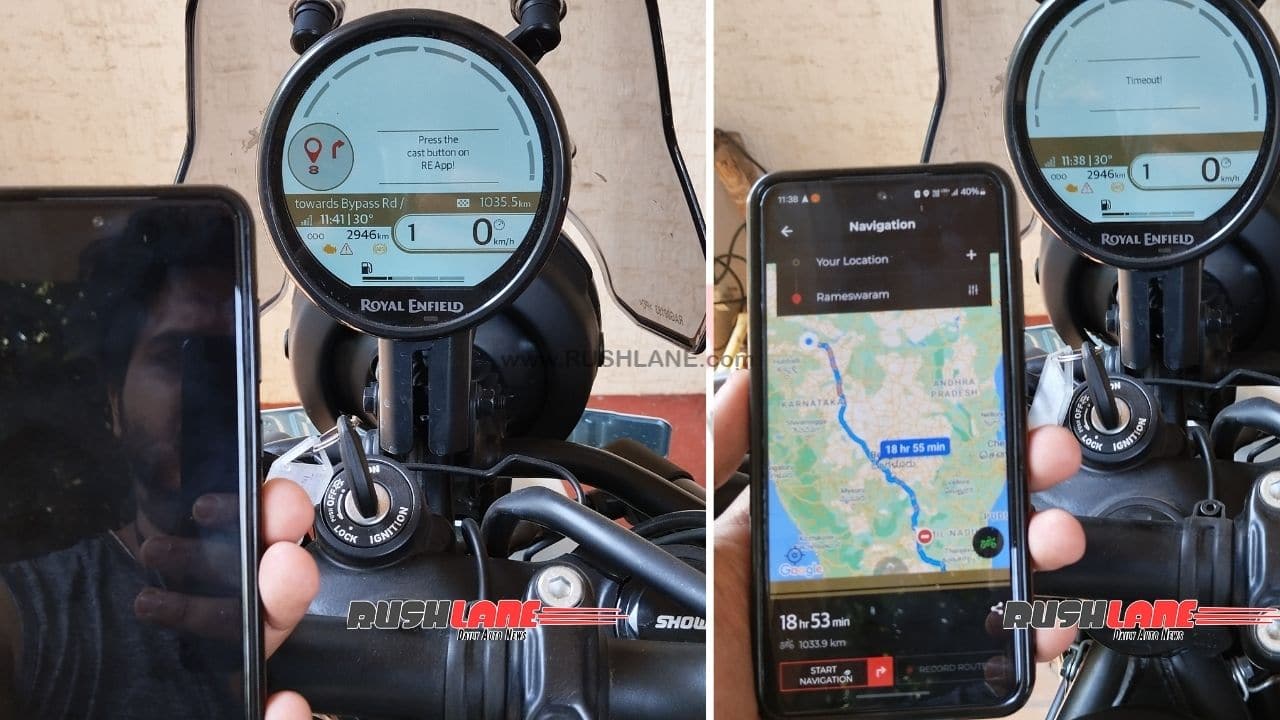
Lastly, we have to speak about the enthusiastic speedometer. One time, I was cruising at around 120 km/h and an esteemed gentleman on a 100cc Hero Splendor kept up with me for a long time, raising questions about whether the bike was really going at 120 km/h. I verified the variance in speedometer by matching it with my car’s cruise control. Then I took my GPS and accelerometer-equipped camera out and measured the variance. I don’t wanna quote numbers as they’re taken from consumer-grade electronics and not professional equipment, but there is variance. So, the 165 km/h top speed you might have seen on social media is likely to be way less than that in reality.
Conclusion
We should not dwell on the negatives of Royal Enfield New Himalayan. To conclude this motorcycle, we have to take a few steps back and look at it from a broader perspective and we’ll realise that this is not a motorcycle at all. No. This is a statement. Royal Enfield is saying ‘Stand up, take notice, I’m making high-tech motorcycles now’. And what a statement this is! New Himalayan is a first-gen product and has a few niggles. But with some time, this platform is likely to be stronger than ever and will have fixed all or most of these niggles.
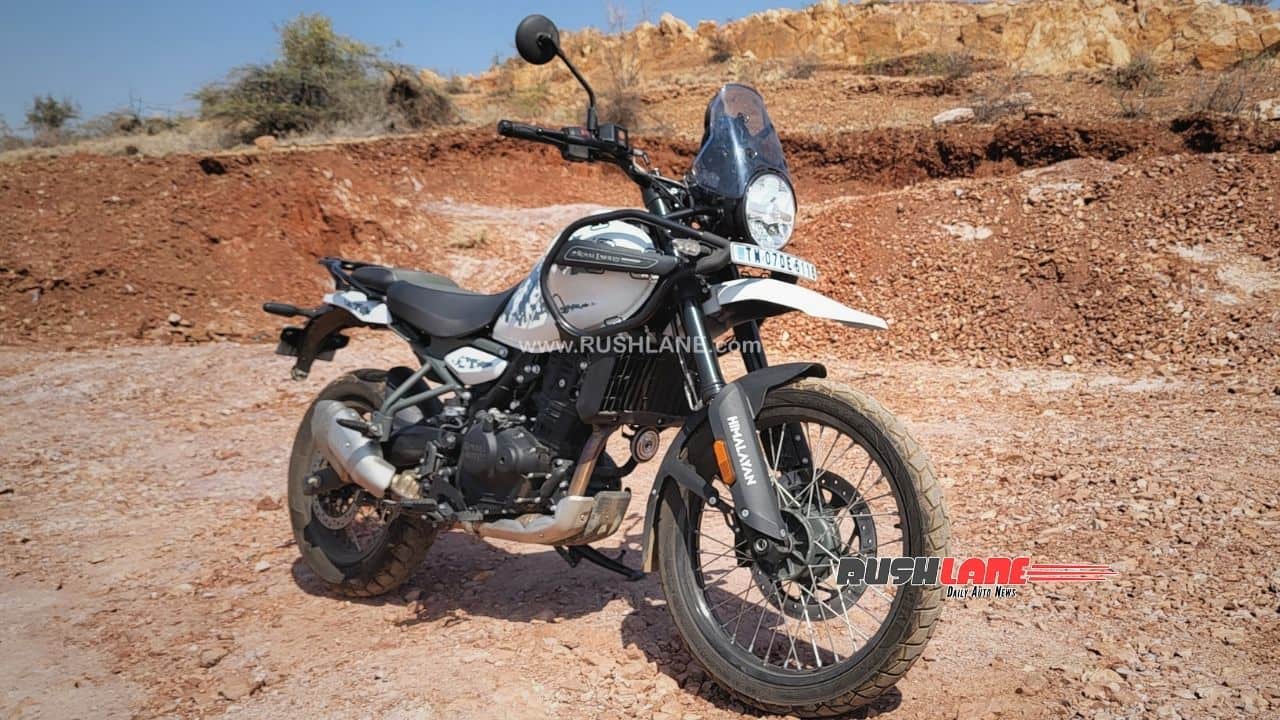
Sure, we would like stronger lighting, a louder horn, self-cancelling turn indicators with sound alerts, cruise control as it has ride-by-wire throttle, reliable features and a hassle-free experience with a motorcycle that costs almost Rs. 4 lakh (OTR Karnataka). But we sure like the direction Royal Enfield is taking and are excited about the future products positioned on this new platform.
